
As a startup or a successful business owner, you want your website to be more visible and rank higher than your competitors. You will need more than simply practising SEO to take you there. You must also perform SEO competitor analysis to identify your site’s weak areas and strengths to stay ahead of the curve.
In this blog, we’ll take you through what SEO competitor analysis is to analyse tools and ways to conduct it. Let’s begin with the what first.
SEO Competitor Analysis
SEO competitor analysis means checking out your industry’s competitive landscape online. Performing SEO competitor analysis helps you evaluate your SEO competition and analyse the information you need to boost your website and climb up the SEO ranking ladder.
Importance of Competitor Analysis in SEO
Competitor analysis report in SEO can help your business in multiple ways. Let’s briefly look at the reasons.
Identify Your Business’s Strengths and Weaknesses
SEO competitor analysis helps you identify your site’s strengths and areas that need SEO optimisation.
Establish Benchmark Performance
Comparing your SEO efforts with your competitor helps you set realistic goals for your SEO strategy. You realise where your business stands about your competitors by evaluating critical SEO metrics and KPIs like SEO ranking, organic traffic, conversion rates, user engagement, etc.
Uncover New Opportunities
When you identify and analyse the keywords and topics your competitors rank for, you can identify gaps in your SEO strategy. This enables you to create content and optimise your website to attract a newer and larger audience.
Why is Seo Competitor Analysis Important for Business?
A search engine optimisation competitor analysis is needed if you want your website to be more visible and rank higher than other competitors. Moreover, Google algorithm updates are rolled out occasionally, and you need to check how other industries incorporate the updates. You’ll know this only when carefully studying other websites’ key metrics.
SEO Competitor Analysis Steps
The steps suggest how to do SEO competitor analysis:
Identify Your Keywords
Accurately researching competitor keywords lets you find content gaps to fill and expand your site’s visibility. Moreover, you may even find new target keywords that you may have overlooked.
One of the easiest ways to identify keywords is to Google a query and look for the ‘People also ask for’ section at the bottom of the page. You’ll find the most commonly searched questions and keywords. The other way is to use tools like Google’s Keyword Planner to conduct keyword research.
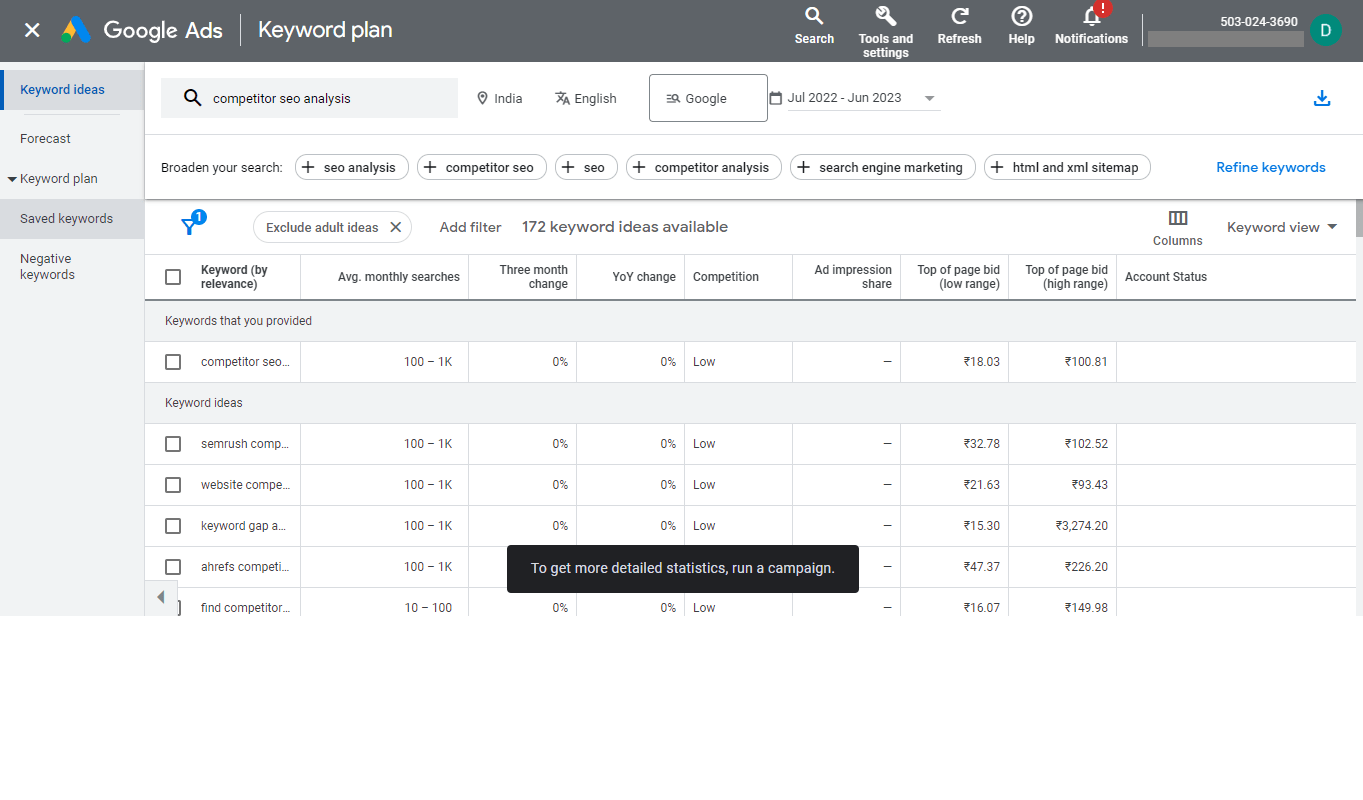
Identify Your Seo Competitors
This is your first and foremost step. While this step may sound basic, if you need to know who you are competing with, how do you know how to outperform them? The competitor segment will vary depending on the type of business sector and how old your business is.
The question is–how do you identify your SEO competitors? We’ll look at two ways of doing so.
Google Search to find SEO competitors
GMB (Google My Business) list will give you the name of SEO competitors depending on your search query. For example, if you search ‘Top SEO agencies in Ahmedabad,’ you’ll get a list of SEO agencies in Ahmedabad. There, you have your SEO competitors!
Use SEO tools to find SEO competitors
If Google doesn’t satiate your quench for finding SEO competitors, you may opt for SEO tools like Semrush, Similarweb, Screaming Frog, and BuzzSumo. While you can use many of these tools for free, going for paid ones will give more accurate results. It, however, depends on your requirements and budget.
Analyse Your Competitors’ SEO Performance
Once you identify the keywords and your SEO competitors, it’s time to analyse the SEO performance of your competitor websites. Below are the steps on how to research competitors
Analyse Competitor’s Keywords Performance
Competitor SEO analysis is a broad process. It consists of analysing competitors’ keyword performance, content performance and technical SEO performance. Uncover the keywords your competitors rank highly for and create content outranking them in search results. Keywords are the core of any SEO strategy.
Analyse Competitor’s Content and Performance
After identifying the keywords of your competitor’s websites:
- Perform content analysis in a structured way.
- Break down the analysis into steps, notice their content structure and spot the top-performing content type.
- Check the weak spots in the content and try to fill them with your SEO strategy.
The following questions will help you do so:
- What are they posting?
- What’s the frequency of the posts?
- What’s the content format?
Analyse Competitor’s Technical SEO performance
Once the keywords and content performance analysis gets done, analyse the competitor’s technical SEO performance. Check out your industry’s competitive landscape online and analyse all the information you uncover to boost your website and climb the ranking ladder. It includes analysing various SEO matrices like site traffic, search volume of keywords, etc. and figuring out ways to improve these in your website.
Utilise Free Tools
Conducting SEO analysis can be made easy with free tools. We’ll look at two such tools for technical SEO performance analysis.
PageSpeed Insights
PageSpeed Insights (PSI) reports on the user experience on all types of devices and offers suggestions for improving the page.
GTmetrix
GTmetrix is a web-based tool offering analysis of the website’s speed. It analyses a site’s load time, requests, and size and generates scores with suggestions to improve it.
Analyse Competitor’s Backlinks
Competitor backlink analysis is where you reverse engineer your competitor’s backlinks. There are two primary types of backlinks. Let’s take a look.
Types of Backlinks: Do-follow and no follow
These types of backlinks are ways to identify a link and tell Google how to associate the website you are linking to your website. Do follow link passes on the authority to a website, while a no follow link doesn’t pass on link juice.
So, each time you insert a do-follow link on your website, it points back to you, strengthening your website. At the same time, no-follow links don’t influence the search engine rankings of the destination website URL.
Backlinks Ratio
A thumb rule for the backlinks ratio is to aim for 60% do-follow and 40% no-follow links. Remembering that both links are essential for your site, in the long run, is vital. Many high-authority websites have only no-follow links, which brings terrific benefits in terms of website traffic.
Identify opportunities for improvement
After the analysis part is over, it’s time to identify opportunities for improvement in your website.
Keyword
You must’ve found a few commonly used keywords on your competitors’ websites. Incorporate them into your website to increase your website’s visibility. However, ensure not to stuff your website with these keywords, which will play against you in the long run.
Content
You also must’ve analysed the type of content your competitors publish.
- Do they post long-form content?
- How often do they publish?
- Do they leverage social media platforms?
- Which type of content format do they use?
Answering such questions will help you devise your content marketing strategy better.
Technical
Now comes the technical aspect. This section includes parameters such as website traffic, views, number of clicks, etc. After analysing these metrics, it’s your turn to create content that drives traffic to your website. Doing so requires a thorough understanding of social media platforms, blogs, video content, text-based content, audio content, etc.
Backlink building – a broken link, guest post, outreach
Backlinks, also known as inbound links, represent another website’s traffic coming to your website. The quantity and quality of backlinks help your website rank higher in Google. One way to do so is to reach out to external organisations, partner with them and request a backlink pointing to your website resulting in link-building activity.
Implement your changes
Now comes the most important part–implementing the changes. After all the keywords, content, and technical analysis of competitors’ websites, you need to incorporate the changes. You can do so on your own or with the help of an agency.
Track your changes
After incorporating the changes, fix the parameters you want to improve and monitor them regularly. For example, if you include keywords in your content, check how the blogs or videos perform.
Organic traffic
Check whether your website is generating organic traffic after making the required changes. For example, if you’ve incorporated more videos in your blogs, see if it’s attracting new users.
Keyword Rankings
Many keyword rank-checking tools like SEMrush or Google’s free Keyword position checker exist. Doing so will let you know how well your website ranks for the target keywords.
Backlinks
Tracking backlinks begins by finding the sites linked to your domain, their authority and the anchor text they use. You can use backlink-checking tools like SE ranking checker, a comprehensive SEO platform that combines all the required tools in the same environment.
SEO Competitor Analysis Tools
At Aone SEO Service, we use some of the best tools to analyse a website and provide the best SEO services in India. SEO competition analysis tools help determine the types of products and services your competitors offer and how they market and sell those products. However, you must clearly understand all the key metrics you want to track and analyse.
Below are a few SEO competitor analysis tools you can leverage:
Screaming Frog
Screaming Frog is a website crawler that helps you enhance onsite SEO by identifying common SEO issues. SEO audit is important because it helps in finding & identifying where the website is lacking compared to competitors and helps you make smart decisions.
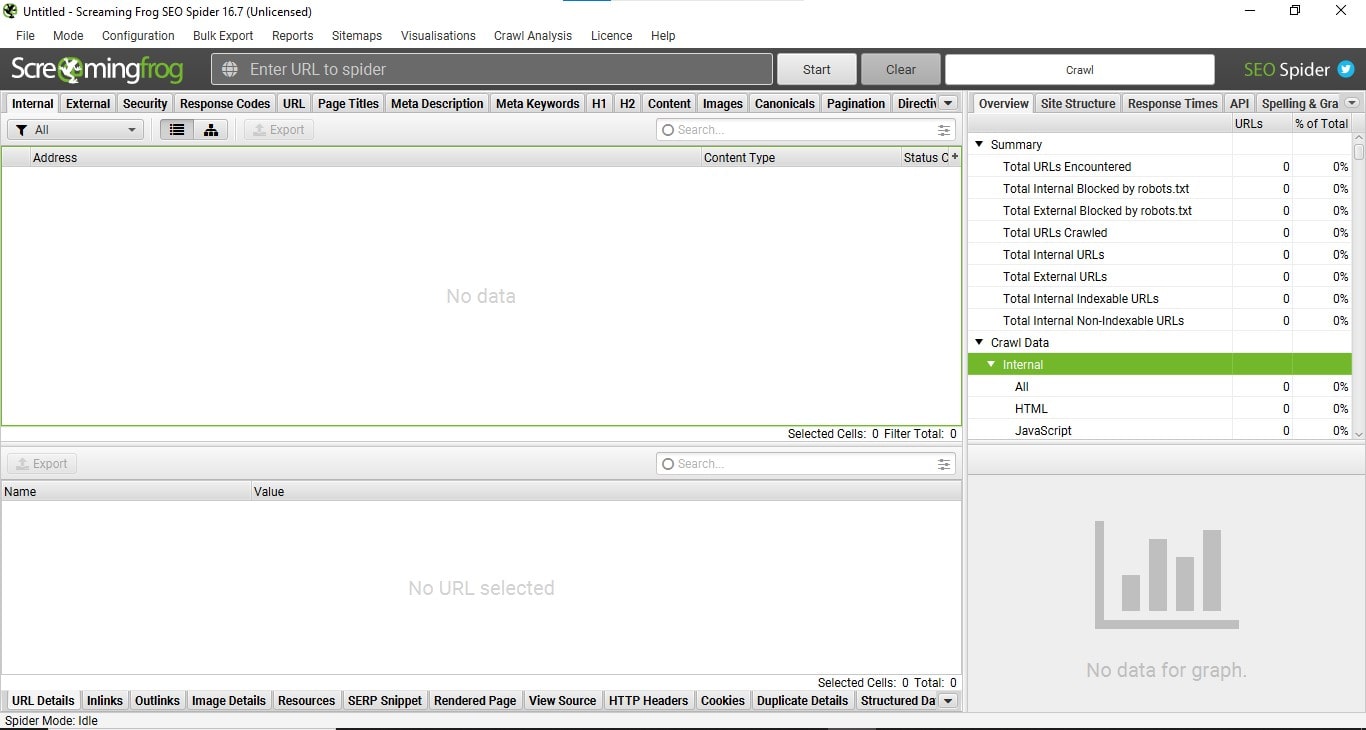
Ahrefs
Ahrefs is an all-in-one SEO toolset that helps you grow search traffic and optimise your website.
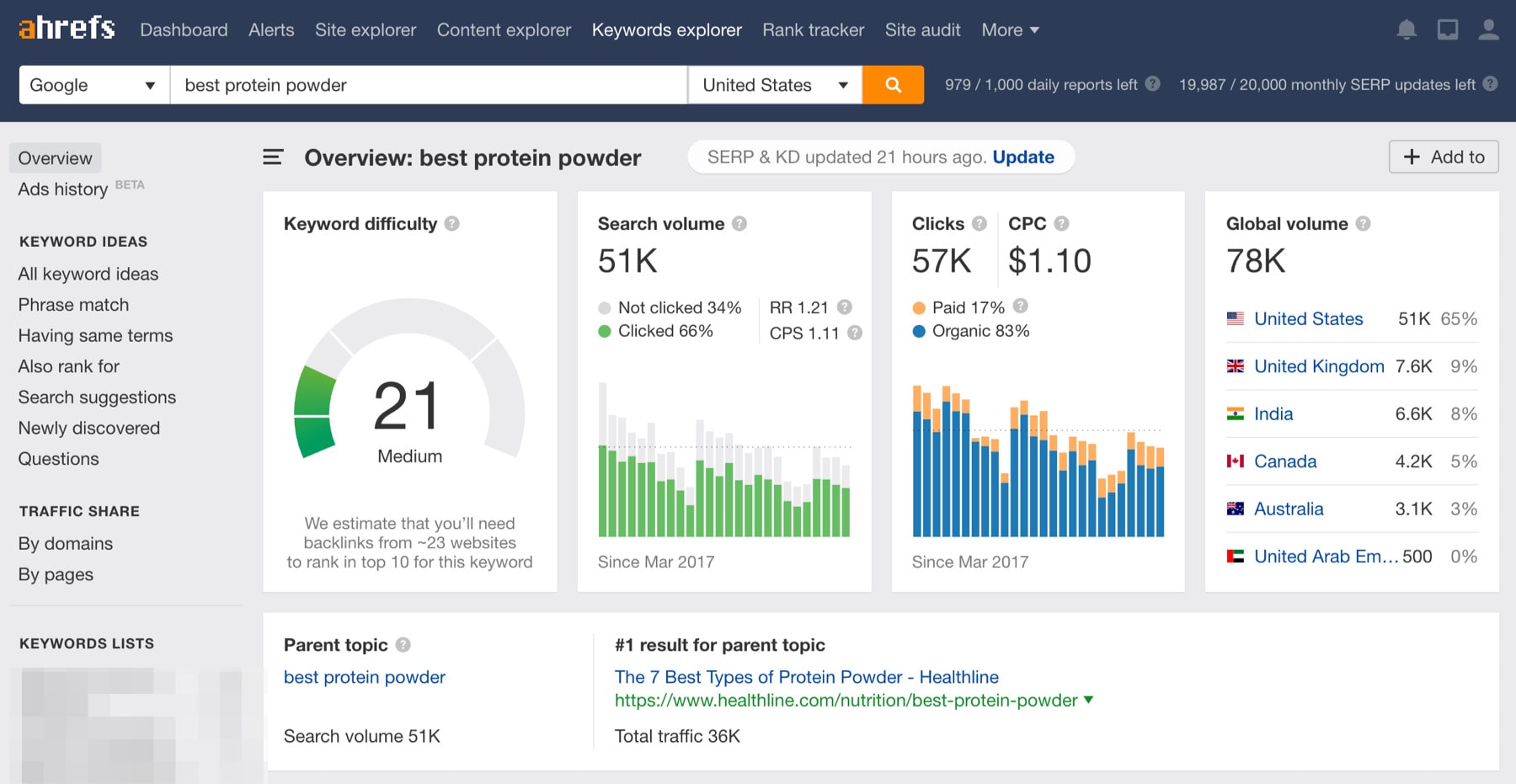
Semrush
Semrush is also an all-in-one toolset to improve your website’s online visibility and gather marketing insights.

SpyFu
SpyFu is a keyword research and competitive intelligence tool digital marketers use to enhance their performance in online searches.
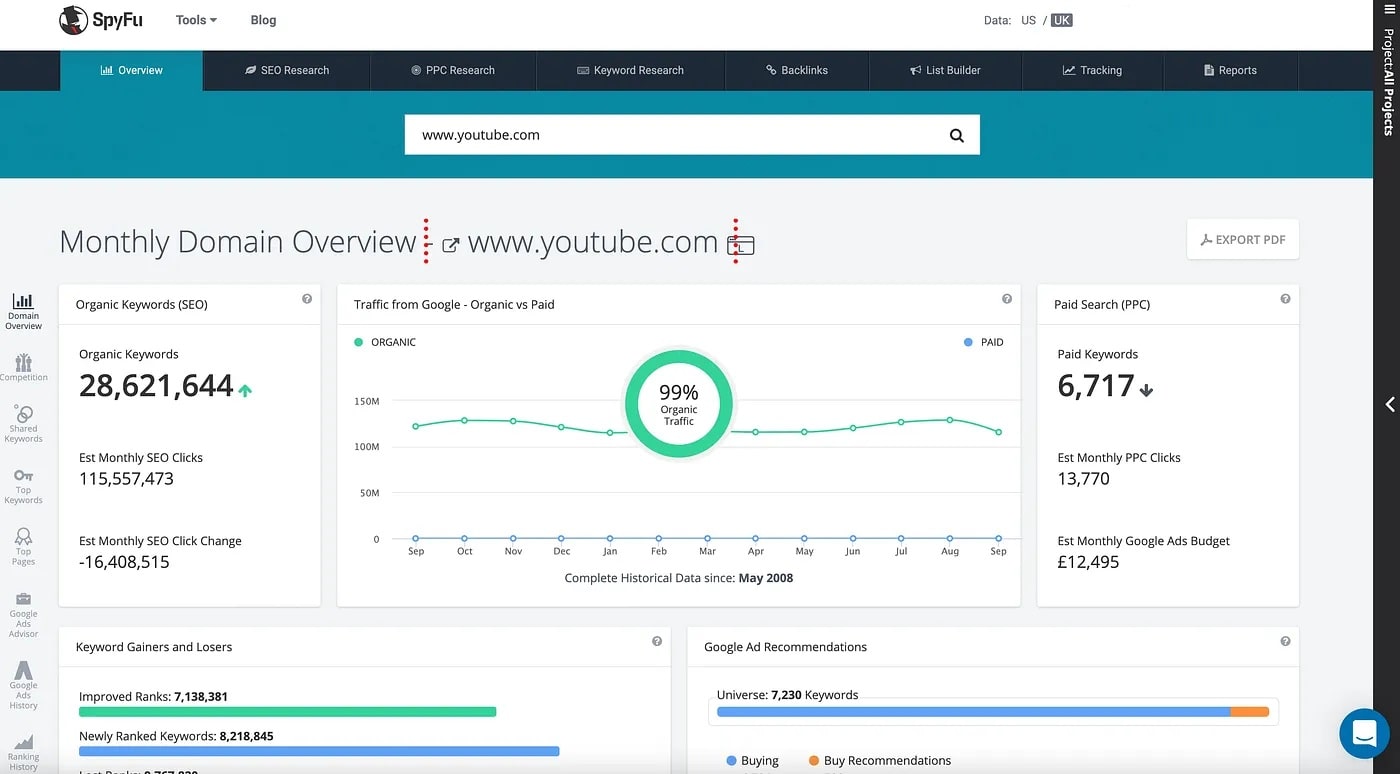
Serpstat
Serpstat is an all-in-one platform that helps with keyword research, competitors’ analysis and SEO parameters analysis of your website.
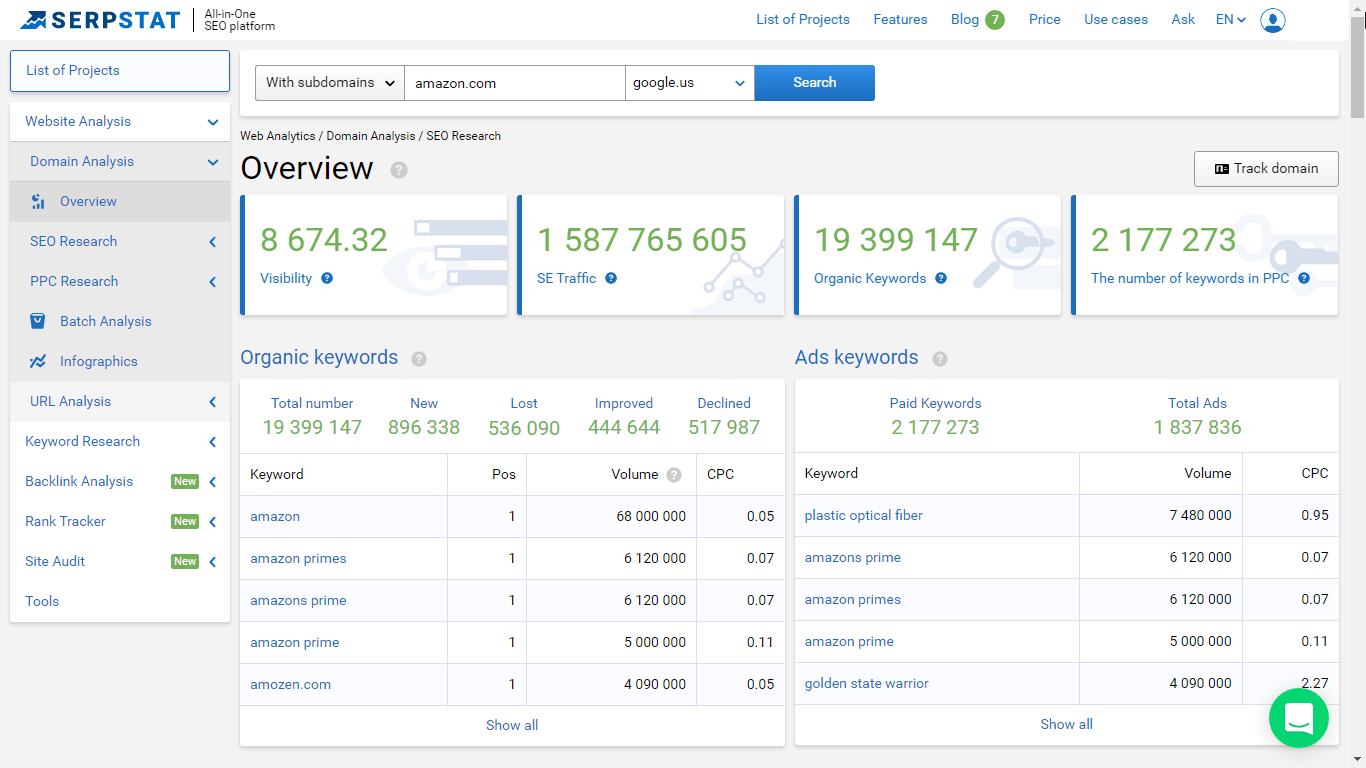
How Do I Find My SEO Competitors?
As stated earlier, there are numerous ways to find SEO competitors– the most basic being Google search. Finding your online competitors is the most manual and straightforward process without bearing any cost. The other option is to use paid tools such as Semrush, Searchmetrics, etc.
Google Maps is also a way to find SEO competitors if you see them within or nearby your region.
What Does an SEO Competition Analysis Include?
To summarise all the components mentioned above, SEO competition analysis includes everything from SEO competitors’ research to keyword research to finalising the KPIs and tracking them regularly. SEO competitor analysis is no rocket science. However, it might be unclear if you’re new to this. In such cases, feel free to reach out to us.
Conclusion
Identifying keywords and competitors is the main part. Then comes deciding the key performance indicators and tracking them. While you need to analyse and track these metrics, ensure you have a few metrics in focus that you want to target. Knowing which metric you want to improve sets the entire tone of your SEO strategy. Aone SEO Service provides result-oriented SEO services, contact Aone SEO Service to take your business to the next level.






